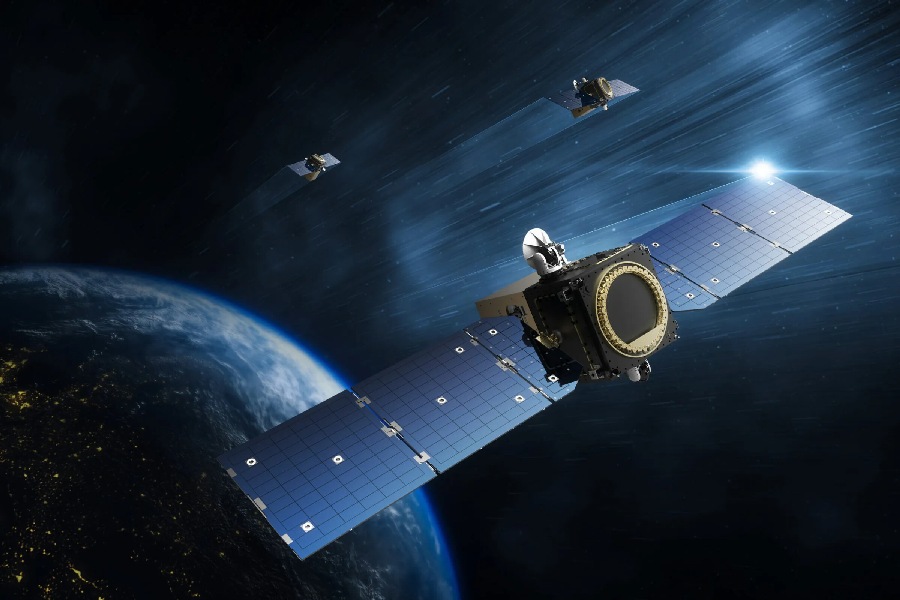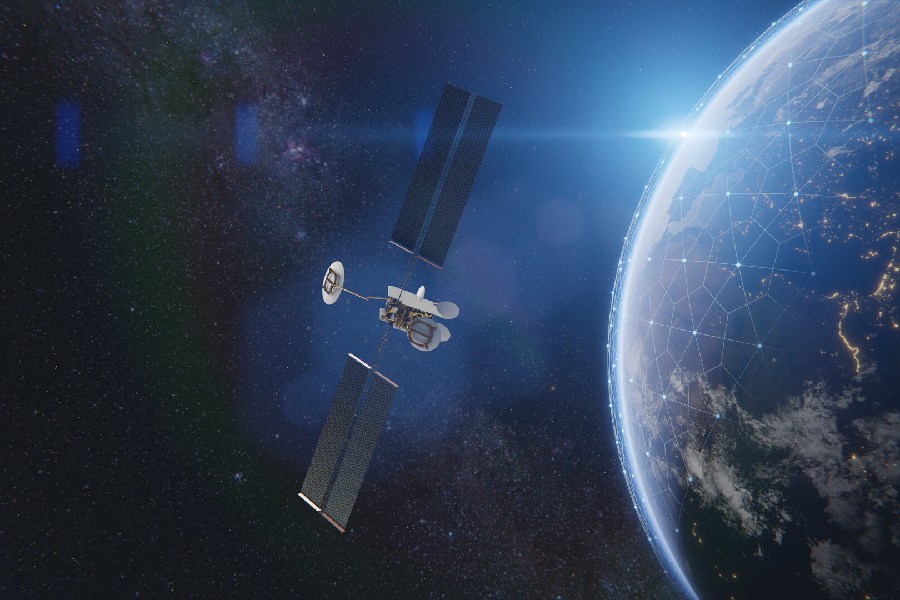From television broadcasting to internet connectivity, satellites in geosynchronous orbit have enabled instant communication across the globe. These spacecraft orbit at an altitude of approximately 36,000 km above Earth’s equator. But how many satellites are in space? But exactly how overloaded is the space surrounding our planet?
Here, we’ll break down the numbers and types of human-made satellites launched so far. Just how crowded Earth’s orbits have become, especially the coveted layer where crucial communication satellites operate.
Scientific research, GPS navigation, weather forecasting, and military surveillance all depend on data from spacecraft high above the Earth’s surface.
You will gain insight into historical trends and future projections regarding the saturation of satellites and orbital debris. Understand which nations and private companies are accelerating the multiplication of satellites and whether regulatory policies can ensure the sustainable use of space.

How Many Satellites are in Space?
As of January 2024, there were over 8,377 satellites orbiting above Earth. The number of active satellites is always changing.
New satellites get launched, while old ones retire and are decommissioned. So the total fleet is constantly shifting as new ones join and old ones leave.
Inactive satellites and space debris also exist in orbit. The overall picture, with ongoing launches and retirements, results in a crowded collection of objects surrounding Earth. But most of this orbital traffic goes unseen from the planet below.
Active Satellites
Over 8,000 active satellites currently orbit Earth as per databases tracking space objects. This number has nearly doubled in the last few years. Instead of governments, private companies have launched most new satellites orbiting the Earth for personal and research purposes. Miniaturization of satellite technology has enabled many smaller spacecraft launches.
The burgeoning private “New Space” sector focuses on small satellite constellations for global internet access. Networks of many satellites in low Earth orbit provide more coverage than a few geostationary ones alone. Small satellites also further research, defense, and commercial remote sensing applications.
Functionalities of active satellites
Active satellites serve communication, navigation, observation, and scientific functions. These capabilities enable applications like phones, TV, GPS, internet, space research, and defense surveillance.
The multifaceted impacts generate huge economic benefits and support sectors, including broadcasting, banking, emergency response, transportation, climate monitoring, and agriculture.
Specialized communication, navigation, and surveillance satellites provide immense advantages to life on Earth. These spacecraft have capabilities and orbits – either geostationary for wide coverage or low Earth to pass over all areas – tailored to their roles. Operators continually maximize instrumentation efficiencies to serve critical orbital tasks.
By leveraging specialized orbital placements and maximizing advanced capabilities, active satellites deliver integral services to humanity spanning essential infrastructure, commercial enterprises, government duties, and scientific pursuits.
Varied functionalities across different sectors
Communication satellites are positioned in geostationary orbits to receive and transmit phone, television, internet, and radio signals across vast coverage areas. Earth observation satellites occupy low Earth orbits to track natural processes for weather monitoring and agriculture planning purposes.
Meanwhile, navigation satellites, like GPS and Galileo, which operate in medium Earth’s orbit, provide precise location data to receivers in vehicles and vessels by converting their time signals transmitted to the ground.

Operational Satellites
Overview of satellites currently in operation
Thousands of active satellites currently support operational missions in space. Most are owned by governments and private companies that utilize their specialized services. Their numbers are rising rapidly, especially for communications and Earth observation applications.
Importance in ongoing missions and services
Though invisible from Earth, intricate networks of satellites are quietly operating overhead, providing services critical to modern civilization. Vast satellite constellations like Iridium, Starlink, and GPS utilize hundreds of cross-linked satellites to deliver specialized capabilities globally.
Major independent satellites like the Hubble Space Telescope and the International Space Station (ISS) serve unique and valuable roles as well.
The Hubble Space Telescope, with its acute vision unhindered by Earth’s atmosphere, enables astonishing astronomical observations that reveal new secrets of our cosmos. The Hubble provides unprecedented views of distant galaxies, stars, and celestial phenomena, contributing to astronomical research. ISS and navigation satellites transmit positional data utilized by billions daily across the planet. The Hubble provides unprecedented views of distant galaxies, stars, and celestial phenomena, contributing to astronomical research.
Communication satellites relay telecommunications across continents and oceans. Additionally, weather satellites collect essential climate and agricultural data by continually scanning our home planet from their orbital vantage point.
Launch Statistics for Operational Satellites
Historical launch trends
- The first artificial satellite, Sputnik 1, was launched by the Soviet Union in 1957, marking the beginning of the space age.
- In the early years of space exploration, the number of satellites launched annually was relatively low, often fewer than 10-20.
- Satellite launches increased during the 1960s space race between the US and USSR. In 1965, there were over 100 satellite launch attempts globally.
- Launch rates continued to climb through the late 1900s and early 2000s as more countries and companies began their own satellite programs.
- The peak so far occurred in 2014, with 238 successful orbital launches carrying over 400 individual satellites.
Current launch dynamics
- In recent years, annual successful orbital launches have leveled off around 150-200. There were 179 launches in 2021.
- The number of satellites per launch is increasing due to large mega-constellations for telecom and imaging being deployed.
- In 2021, over 1,700 satellites were launched, far more than in past decades.
- Private companies like SpaceX’s Starlink have begun dedicated rideshare missions, launching hundreds of satellites per year using reusable rockets.
- Launch trends indicate continued growth in satellites as costs fall.
For example, SpaceX’s Starlink aims to launch 42,000 satellites to provide global internet access. Competitors like OneWeb and Amazon’s Project Kuiper are targeting over 1,000 satellites each. Chinese operators also plan to launch hundreds more navigation satellites.
Private Companies Offering Communications Satellite Services
A new “space race” is on in the global satellite communication sector, led by private companies launching networks of advanced satellites to provide broadband, television, and other services worldwide.
Major players moving aggressively into space include Space Exploration Technologies (SpaceX), OneWeb, Kuiper Systems (Amazon), and Telesat. Low-cost access to space, miniaturized satellite technologies, and eager investors sponsor and invest in these explorations.
Their substantial investments aim to tap into the rapidly growing consumer demand for high-speed internet access, seamless video broadcasting, and on-demand content streaming around the world– especially under-connected rural and remote regions lacking infrastructure.
Their roles and contributions to communication services
Major companies like SpaceX, OneWeb, Telesat, and Amazon aim to have over a thousand advanced satellites each. Their satellites are in low Earth orbits for high-speed broadband connectivity. Viasat, Hughes, and Intelsat focus on television and the internet via geostationary fleets.
Private players drive innovations in areas like mega-constellations, inter-satellite links, radio technologies, electric propulsion, and modular electronics. Their goal is to lower costs and improve lifespan and autonomy.
Conclusion
This exploration aimed to elucidate the intriguing question of how many satellites are in space. We hope that by analyzing the historical growth trends and future projections, it helped you understand the enormous scale of satellites launched and currently functioning.
With private companies vastly accelerating deployment, satellites now number over 8,000 and counting. We are clearly transitioning to a space-based digital economy.
Detailed discussion on active satellites’ diverse roles across communication, navigation, and observation highlighted their immense value in modern life. As orbits get more congested, sustainable space use policies become vital.
With satellites intertwined globally in both commerce and governance, demystifying their quantities and purposes helps assess their rising societal impacts as space infrastructure multiplies at unprecedented rates.
